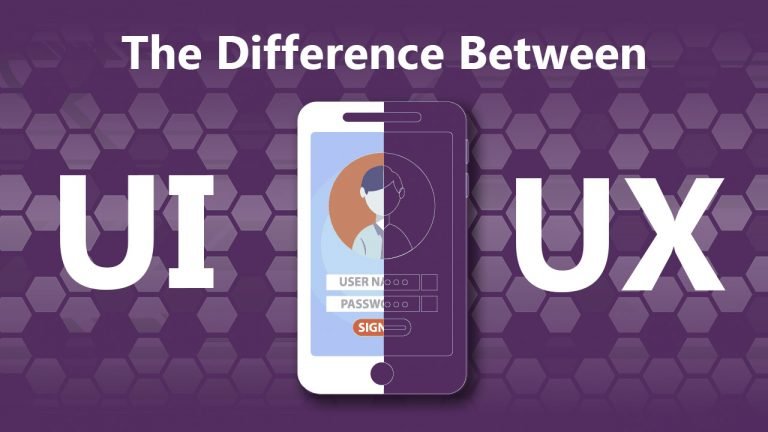
UI design and UX design are two of the most confusing terms in the world of web and app design. This is because, these terms usually placed together in a single term, UI/UX design, describing the web or app as a whole. It’s often hard to find clear descriptions which can differentiate these two properly.
A product is more than a product so it is important that a product is to be created with great user experience and user interface. When a user uses an application or a product the UI gives look to a product and UX responsible for the experience of using the product.
“Something that looks great but is difficult to use is exemplary of great UI and poor UX. While Something very usable that looks terrible is exemplary of great UX and poor UI.”
– Designer and expert Helga Moreno
We can simply understand it by imagining a product as the car, the engine represent the code which give it functionality like UX. The color and body represent the UI, the other look and feel. In simple words, UI is appearance.
UX Design is a User Experience Design, On the other hand, UI Design stands for User Interface Design. The UX and UI both play an important role in a product and work closely together. But despite their professional relationship, the roles are completely different.

What is UI Design?
The “UI” in UI design stands for “user interface.” The user interface is the graphical layout of an application or a product. UI consists of the buttons, the text user read, the images, sliders, gallery, text entry fields, and all the rest of the items the user interacts with. This also includes screen layout, transitions, animations, and every single interaction. Any visual element, interaction, layouts or animation must all be designed.
What is UX Design?
“UX” refers to the “user experience.” A user’s experience must be great to use full functionality of a product. Is the experience smooth and intuitive or confusing? Interacting with the app gives people the sense that they’re efficiently accomplishing the tasks they set out to achieve or does it feel like a struggle? User experience is laid down by how easy or difficult it is to interact with the user interface elements that the UI designers have created.
How They Work Together
A UX designer decides how the user interface works and the UI designer decides how the user interface looks good. This process done by both teams together, and the two design teams tend to work together. As the UX team is working out the flow of the app, how all of the buttons and elements navigate you through your tasks, And how the interface efficiently meets the information user requirement, the UI team is working on how all these interface elements will appear on the screen.
Let’s say at some point in the design process it’s decided that extra buttons need to be added to a given screen. This will change how the buttons will need to be organized and could require changing their shape or size. The UX team would determine the best way to layout the buttons while the UI teams adapt their designs to fit the new layout. Constant communication and collaboration between UI and UX designers assure that the final user interface looks as good as it can, while also operating efficiently and intuitively. UI/UX design agency like Ramotion provides an excellent example of such collaboration.
Some Benefits Of UI/UX Design
Your Business only erns benefits from applications when the user is successful in using them and that success comes from an intuitive design that anticipates user needs. Foreseeing these needs involves time spent interacting with the people using the product in order to understand their challenges, frustrations, goals, and motivations. The more the app developer understands about the user, the better and more efficiently they can design an app to help the user perform their duties.
Forrester Research shows that, on average, every dollar invested in UX can bring $100 in return, so clearly there’s a great return on investment. Here are five more benefits of a well-designed enterprise application:
1. Customer Acquisition
Successful user experience and design, especially when supported by a professional web design agency, provide a competitive advantage. They will likely overtake prices as key brand differentiators that attract new customers. (And who doesn’t want more new customers?) Great enterprise UI/UX is more than just an effective product design – it’s good business.
2. Customer Retention
By building an enterprise application that’s beautiful and intuitive, more people will want to use it, and more importantly, keep using it. In this digital world, customer retention is increasingly important as the competition grows with every technological advancement.
3. Lower Support Costs
A well-designed app just works. If an application is poorly designed, there will be an increased need for support later, which translates into higher costs. An app that is intuitive and easy to use puts less stress on both employees and the users they use.
4. Increased Productivity
Better user experience leads to productivity improvements. When you think the increased productivity over the number of users and hours of the day each user is active, the financial impact is readily apparent – and substantial.
5. Reduces Development Time
An estimated 50% of engineering time is spent redoing work to fix mistakes that could have been avoided, like incorrect assumptions about how users will behave, confusing navigation that causes users to get stuck or lost, a new feature that nobody wants to use, or a design choice that isn’t accessible.
Hope you liked our post please give your valuable feedback in the comment section below.